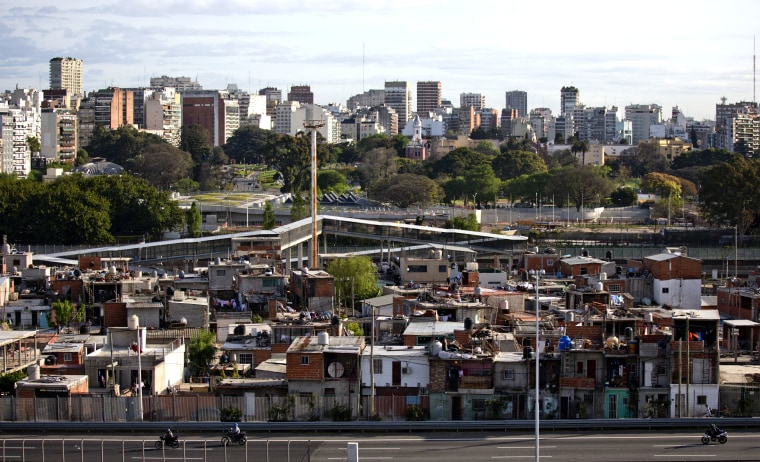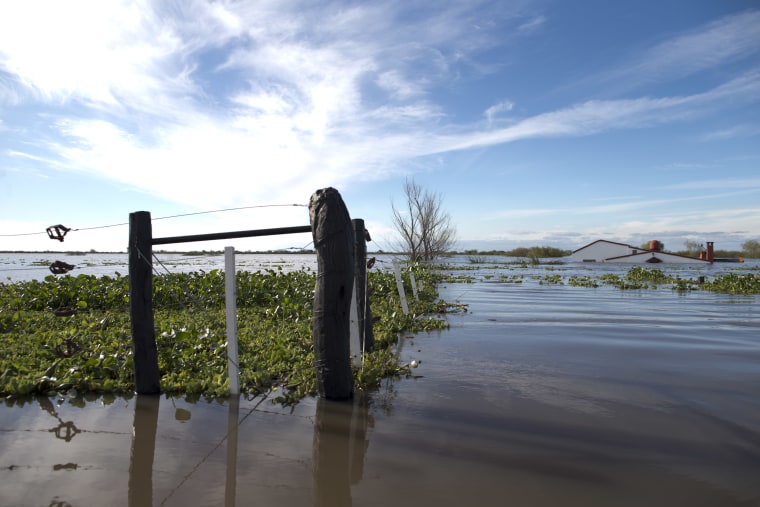It was not just the heavy rains that left the streets of the Argentine town of Pozo del Molle flooded for three months last year.
Nearby farmers built small canals without authorization to drain their fields of surface water, redirecting flows toward urban areas and worsening the impact of flooding, said Carlos Salvatico, the mayor of the 7,500-person town in the key agricultural province of Cordoba.

"Each producer tries to use as much of his land as possible, without realizing the ecological problems he's causing," Salvatico said by phone on Friday. "That creates a large volume of water that ends up causing problems."
So-called clandestine canals built by farmers to protect their crops are often blamed for exacerbating devastation across Argentina's naturally flood-prone pampas grains and cattle belt.
Flooding this summer has prompted evacuations and left 2 million hectares (4.9 million acres) of highly productive land either underwater or cut off from markets because roads are flooded, said Pablo Bereciartua, undersecretary for hydraulic resources in the government's Interior Ministry.
The floods' increased severity comes after decades of financial crises limited investment in roads, bridges and proper canals, despite substantial growth in population and farm output in the world's No. 3 corn and soy exporter.
Recent rains have deepened flooding in low-lying areas while boosting yields in dryer parts of the country. The Buenos Aires Grains Exchange sees soy and corn production in the 2016/17 harvest at 54.8 million tonnes and 37 million tonnes, respectively. Flooding in Argentina caused soybean and soymeal prices to hit six-month highs in January, though they have since fallen.
A WATER PLAN
Center-right President Mauricio Macri, who took office 15 months ago after more than a decade of leftist rule, hopes to ease the problems and boost farm exports by prioritizing infrastructure.
The budget of the Interior Ministry, responsible for public works, grew by 52 percent from last year, more than any other ministry. Public works spending could create construction jobs and boost growth ahead of midterm elections in October.
Bereciartua's team plans to invest $10 billion over four years in projects including canals, storm drains and warning systems to mitigate the impact of floods and other extreme climate events.

That includes a 771 million-peso ($49.75 million) tender published on Monday for improvements to the San Antonio canal, aimed to protect towns and improve drainage in Cordoba and neighboring agricultural powerhouse Santa Fe.
ROOT CAUSE
Nicolas Bertram, a researcher at Argentina's public National Agricultural Technology Institute, said investments in hydraulic infrastructure are a stopgap measure and that only changes in land use can address the root cause of floods. A gradual switch from cattle ranching to soy, which absorbs less water than grass, has increased flood risk, he said.
Bereciartua said land use changes and more intense storms tied to climate change are two major factors in the rising frequency of damaging floods, but that a lack of infrastructure investment and planning has left populations and farms vulnerable.
"It's no coincidence that the San Antonio canal ... was built in 1939, when Argentina was still a country with the capacity to plan, with the capacity to do public works," Bereciartua said in a late February interview. "And afterwards, nothing was done for decades."
His words reflect the sentiments of many Argentines who believe their country, one of the world's richest a century ago due to its large swathes of fertile farmland, has since been on a steady decline.
The top three grains producing provinces of Buenos Aires, Cordoba and Santa Fe ranked at the bottom in per-capita infrastructure investment between 2005 and 2014, according to a 2016 report from IERAL, a think tank.
Once waters receded last June in Pozo del Molle, provincial authorities built a canal encircling the town. While the surrounding farmland is still at risk of floods, Salvatico said the canal will protect the urban zone.
"There had never been substantial public works done in the area," he said. "But beginning last year they've started taking the situation very seriously."